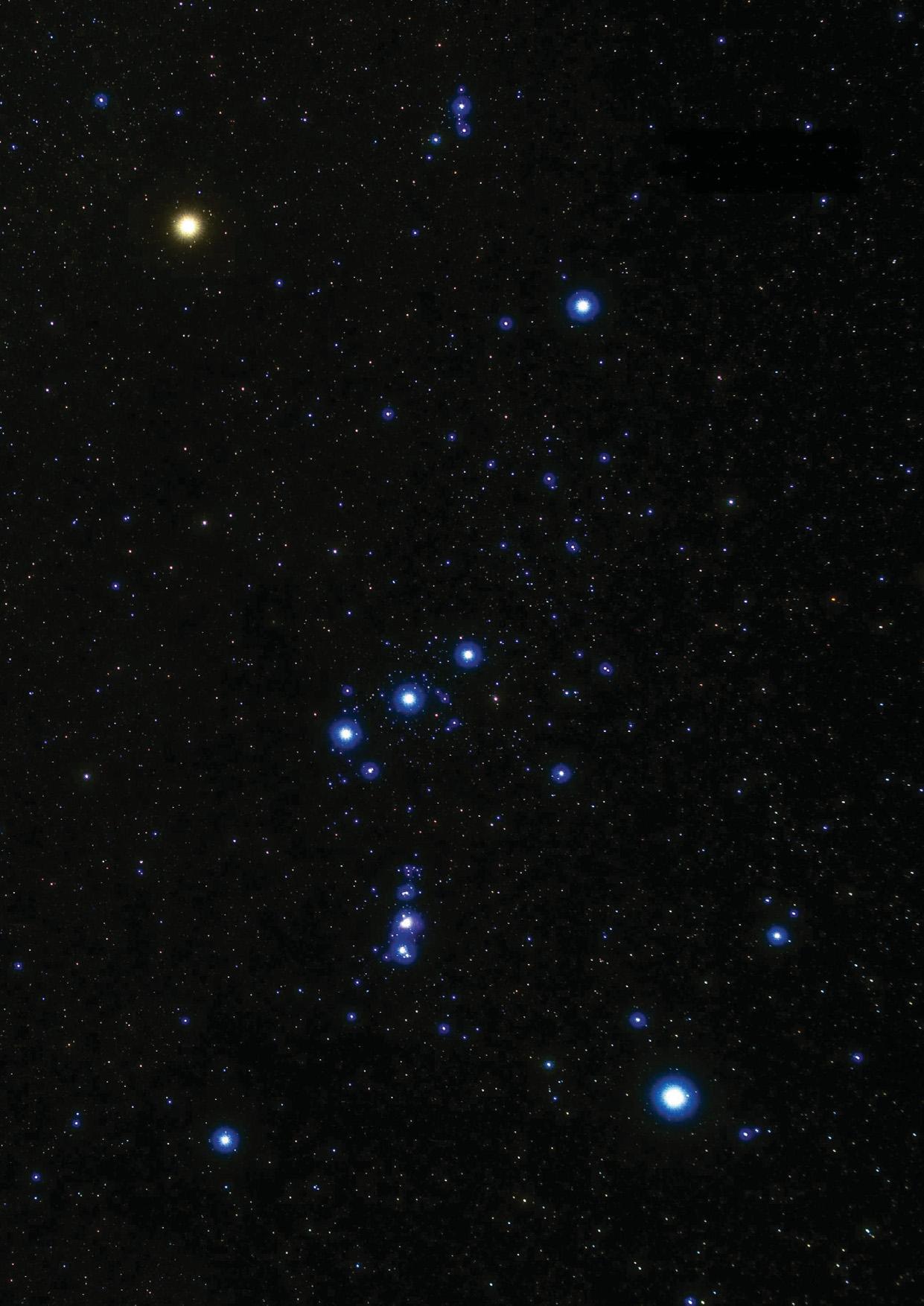OBSERVING VARIABLE STARS
BBC Sky at Night Magazine
|February 2023
Pete Lawrence is your guide to viewing variable stars so you can record their changes in brightness
-

Although it may not be obvious at first sight, many stars vary in brightness over time. Some of these variable stars change magnitude on predictable timescales, others are s regular. Recording the variations is a rewarding and straightforward form of observing which ultimately helps decode how certain stars work. In this article we'll look at different types of variable, how to observe them and how to interpret the results. We'll also give you some examples to get you started.
A star's brightness is quantified by its magnitude. Some stars remain at constant magnitude, some vary a little and some vary a lot. Indeed, some stars become bright enough to change the visual appearance of their host constellation, such as Betelgeuse (Alpha (a) Orionis) and Mira (Omicron (o) Ceti) (see 'Six variable stars to get you started' on page 66). Variability can occur on a predictable basis or can be highly irregular. The majority of variable stars appear to vary indefinitely, but some vary just once, with extreme examples being supernovae.

Variation in magnitude is either caused by external factors or by internal changes within the star; those in the first group are known as extrinsic variables, while those in the second are called intrinsic variables. An eclipsing binary such as Algol (Beta (B) Persei) is an example of an extrinsic variable; its observed brightness variation is due to a dimmer star passing in front of a brighter one with a very predictable period.
Denne historien er fra February 2023-utgaven av BBC Sky at Night Magazine.
Abonner på Magzter GOLD for å få tilgang til tusenvis av kuraterte premiumhistorier og over 9000 magasiner og aviser.
Allerede abonnent? Logg på
FLERE HISTORIER FRA BBC Sky at Night Magazine

BBC Sky at Night Magazine
MOONWATCH
January's top lunar feature to observe
2 mins
January 2026

BBC Sky at Night Magazine
Speed up your processing workflow
How to use Photoshop's Actions tool to drastically cut your processing time
3 mins
January 2026

BBC Sky at Night Magazine
Chasing Canada's polar lights
With solar maximum peaking and a new Moon promising dark skies, Jamie Carter travels to Churchill, Manitoba to hunt the Northern Lights - and dodge polar bears – in Canada's far north
7 mins
January 2026

BBC Sky at Night Magazine
Beyond Pluto: The search for the hidden planets
Could one – or even two - undiscovered planets lurk at the edges of our Solar System? Nicky Jenner explores how close we are to finding the elusive 'Planet 9'
6 mins
January 2026

BBC Sky at Night Magazine
Jupiter moon events
Jupiter is a magnificent planet to observe.
2 mins
January 2026

BBC Sky at Night Magazine
What samples from space have taught us
Alastair Gunn explains what scientists have learnt in the 20 years since the first unmanned mission brought materials back from alien worlds
3 mins
January 2026

BBC Sky at Night Magazine
The Milky Way as you've never seen it before
This is the largest low-frequency radio colour image of our Galaxy ever assembled
1 min
January 2026

BBC Sky at Night Magazine
Merger of ‘impossibly' massive black holes explained
Scientists discover how enormous, fast-spinning black holes can exist after all
1 mins
January 2026

BBC Sky at Night Magazine
Lunar occultation of the Pleiades
BEST TIME TO SEE: 27 January from 20:30 UT
1 min
January 2026

BBC Sky at Night Magazine
The Universe's expansion may be slowing down
New study suggests current theories of dark energy could be wrong
1 mins
January 2026
Translate
Change font size

